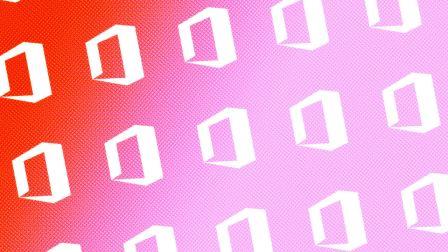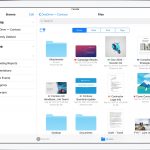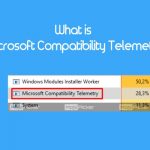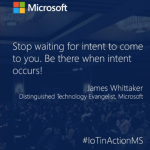the future of Microsoft office: Many Apps, Many Interfaces, Many gadgets
more than a quarter of a century in the past, Microsoft put a phrase processor, a spreadsheet, a presentation package deal, and an e mail consumer into one box and called it Microsoft office. In doing so, it created the productiveness suite as the sector got here to know it. And for all which is since changed about place of job, the gadgets it runs on, and the competitive landscape, the basic defining thought—lumping together a handful of feature-laden apps, each and every of which handles a unique sweeping class of business tasks—has hardly modified at all.
at last week’s build convention in San Francisco, on the other hand, Microsoft articulated a new vision for its venerable productiveness offering, which now has 1.2 billion users around the world. It includes breaking down place of job down into its component elements, letting customers and 0.33-celebration developers mix and match capabilities in new methods, and layering on conversational interfaces which can be far, a ways afield from the suite’s keyboard-and-mouse origins. on the conference, I caught up with Qi Lu and Julie Larson-inexperienced—the chief vice chairman and chief experience officer, respectively, of Microsoft’s applications and services and products staff—to talk about the place workplace is going.
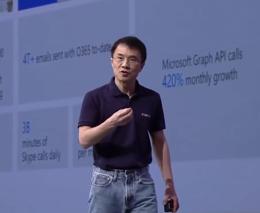
the fact that office will grow best more cell and cloud-primarily based just isn’t precisely a shocker: Microsoft has been positioning itself as an organization that’s simultaneously cellular-first and cloud-first ever due to the fact that Satya Nadella turned into its CEO in February 2014. but there may be some other core part to place of work’s future imaginative and prescient: figuring out what matters to individuals and firms through inspecting the voluminous amounts of knowledge they invent within phrase, Excel, Outlook, PowerPoint, and other place of business apps.
“even supposing cellular and the cloud will also be viewed as the enormous two tidal waves, intelligence is the only greatest driver of innovation,” says Lu, whose authentic obligations when he joined Microsoft in 2009 incorporated spearheading its search-engine operations. “We see a world the place we’ll be able to use knowledge to basically take note how work gets accomplished, how folks collaborate.”
not just Sci-Fi
think about a busy businesswoman barking directions about an pressing project into her watch as she races via an airport terminal. As she does, a instrument agent understands each request, effectively amassing necessary information from disparate sources and then alerting the related people—despite the fact that she never known as upon particular apps or talked about any colleague particularly. that is the form of situation that place of work’s future imaginative and prescient, in its most out-there form, intends to enable. it might appear tempting to jot down the whole thing off as the sort of glitzy futurism that Microsoft has incessantly pitched in keynote addresses and in videos such as this:
but even supposing much remains to be executed, place of work’s new imaginative and prescient is not just, neatly, a vision—it’s a piece that’s already in growth. “For our groups, Julie and i working together, the present imaginative and prescient is the fruits of work over the past two-plus years,” says Lu.
in retrospect, Microsoft has been pulling collectively the essential elements for a lot longer than that. closing 12 months, it introduced the Microsoft Graph, a set of hooks that allow third-celebration developers construct apps and products and services that have get admission to to special data from within workplace, such because the customers inside a company, their calendars, and the paperwork they’ve created. In 2014, it launched place of work for the iPad—not the primary modern model of the suite for a non-Microsoft platform, however the first that didn’t provide off a vibe that Microsoft used to be all in favour of it being too just right. Three years sooner than that, it announced administrative center 365, which became place of work from a field of device for a particular computer right into a carrier that entitled you to run the most recent versions of all its apps on multiple units.
And whats up, the idea that of “conversational interfaces,” which used to be a major theme at construct, is a really long-term Microsoft dream, dating back to the mid-1990s and the company’s Microsoft Bob and “Clippy” workplace Assistant—both of which, though famously aggravating and unsuccessful, have been forward-looking in their own idiosyncratic means. they are clear precursors to Cortana, the voice-enabled assistant that originated as a home windows telephone feature in 2014, is now a part of home windows 10, and is in the works for iOS and Android.
Microsoft has additionally been prepping itself to build a brand new kind of office with the aid of studying the way to just plain move quicker than it did within the era when the suite’s major way of supply was once as instrument in a box. “as of late, our capacity to ship code is evening-and-day totally different than two years in the past,” says Lu. “We used to ship every body year, infrequently two years, every so often three years. Now our groups ship a week, from time to time, and as a minimum as soon as a month. it’s an enormous alternate. Having that velocity is so essential for us.”

duties, not instruments
the future of office entails all of the above parts. “We’re shifting from having people take into consideration the tool to fascinated about the duty,” says Larson-inexperienced. “as an alternative of claiming ‘I wish to make a PowerPoint,’ we consider ‘i’ve ideas to be in contact.’ If we will have a gathering together after which i will observe up with you with the notes and the PowerPoint and the other issues that got here from the meeting, nowadays there’s various steps you are taking. You think ‘I wish to go to electronic mail, determine who was once in that meeting, compose a mail, connect a PowerPoint.’ sooner or later, the usage of the intelligence of the machine that is aware of all these things and all these connections between issues, that you would be able to just say ‘ship the notes and the PowerPoints from my ultimate assembly.’ while not having to present it extra information than that.”
on this future situation, precisely the way you engage with workplace depends on what sort of device you are the use of. Larson-green speculates that place of business could at some point be on hand in simply voice-enabled form on some kind of software that does not have a screen at all. however she stresses that a conversational interface is not synonymous with Siri-model speech recognition and synthesis. “it could be voice,” she says. “it usually is voice plus gesture. it usually is textual content and typing. It could be a combination of different inputs. You tell it ‘No, more like this, no, extra like that.’ And two-means conversations and disambiguating issues through you being requested questions.”
for many years now, people who use administrative center were used to loading up phrase, Excel, and different apps and shuttling between them as a project calls for. at some point, it’s possible you’ll hand off a sizable chunk of this work to retailers and bots—and yes, Microsoft attracts a distinction between them. dealers are working to your behalf and—with your permission—can goal to piece collectively a deep figuring out of your work by way of examining your paperwork, e mail, calendar, and collaborative acts inside administrative center. by contrast, a bot may be working as a consultant of a third birthday party, such as a retailer, an airline, or a lodge chain; it’s an expert on the duties it is been programmed to perform, however does not have unfettered get entry to to your individual knowledge.
“Starbucks’ bot probably is aware of all of the coffees,” explains Lu. “when you are a universal client and it is sensible in context, it’ll even understand that oh, you are likely to order this type of latte. however that bot will not comprehend your birthday.”
office within-Out
talking of Starbucks, its CTO, Gerri Martin-Flickinger, was onstage all over one among build’s keynotes to show off an add-in that allows you to order reward playing cards to bestow upon deserving coworkers and chums from inside Outlook—an example of how Microsoft is considering with regards to specific tasks, and letting third events construct functionality to let administrative center do new things.

“At work, Starbucks reward playing cards have turn into a bit of a thank-you currency,” Martin-Flickinger instructed me after the keynote. “And it can be more or less a pain if you want to log on and purchase a present card—it’s good, and it’s beautiful, however you have to cease your brain from what you might be doing and go to the website and buy a card. Or walk into a Starbucks and buy a card at the counter. And so we were just brainstorming ideas and mentioned ‘Wow, it might be really cool if Starbucks could be more integrated in that workflow process that information staff have.’ And one of the places they live all day long, for excellent or bad, is e mail.”
building Starbucks commerce into Outlook, although an unique and unexpected idea, is an example of administrative center’s long-standing potential to be a container for 0.33-birthday celebration performance. but now Microsoft can be flipping that conception on its head. With the Microsoft Graph, builders can pull data from office 365—every so often superior with the aid of deep-learning expertise—into their own standalone apps. At construct, as an example, Microsoft demoed how the DocuSign digital-signature provider makes use of a few traces of code to let users send recordsdata to coworkers.
The Graph is not just serving as a secular deal with ebook: because of its deep working out of the info generated by a corporation that makes use of workplace 365, it knows which persons are fascinated about particular projects and even is aware of if a specific particular person is out of the place of business and therefore doubtless unavailable to signal a document. via calling on the Graph, DocuSign could make its own carrier more helpful whereas additionally giving organizations that use workplace 365 one more reason to keep paying Microsoft for the service.

beyond windows
In its current versions for iPhone, iPad, Android, and the net, workplace is appealing partly because it is effectively reminiscent of the home windows model. however Microsoft is keenly conscious that the additional the suite ventures from its pc origins, the much less its prior formula is a template for future variations.
“We grew up in the technology of, you add more options—’here’s the eight new issues we brought,'” says Larson-inexperienced of Microsoft’s traditional product-development strategy. “within the cell world, it’s not about fidelity or features or pixel-excellent layouts, or all these things that were in point of fact essential on the laptop, and will continue to be essential.”

She points to the Apple Watch model of place of work’s OneNote observe-taking app. “it’s a fully different interface, as a result of that you would be able to’t actually put a [conventional Windows] user interface on a watch. We needed to rethink the input, and we use a mix of voice, tiny keyboard, and gestures.”
For users, the inducement to make use of OneNote on an Apple Watch has nothing to do with its interface being familiar, and everything to do with the fact it shares the identical repository of notes you create using other versions of OneNote. that’s a massive a part of how Microsoft sees place of work staying core to how businesses work regardless of whether or not they’re working in home windows. it will be in regards to the ever-increasing corpus of corporate intelligence that a company creates as everyone inside it makes use of workplace.
“within the next five years or 10 years, it is hard to image that as an individual consumer, as a staff, you’re going to use devices that all come from the same firm,” says Lu. “it’s going to be a combination of devices. the ability in some ways is going to be the data. The contents, the information about you, how you work.”
which is not to claim that Microsoft has misplaced interest in leveraging its operating gadget when it could. With windows units similar to Microsoft’s personal floor and its pen, Larson-green says, “now we have much more control and an entire end-to-finish expertise, with integration into the [interface] and even affect on the hardware, which is why you’ll see some good things arising in the inking world. We’re able to talk directly to the hardware crew about what we need to see with ink.”
Paradigms old And New
When Microsoft presented the newfangled toolbar known as the Ribbon in administrative center 2007, it was once fast embraced by means of some customers while others grumbled and clung onto prior versions of the suite for so long as conceivable. nowadays, the Ribbon is likely one of the most lengthy-based and familiar interfaces in software, and it can be the theory of interacting with office thru voice, chat, and gestures that appears like a trip to a courageous new world. Convincing 1.2 billion individuals to come along is the type of challenge with a view to occupy Microsoft for a few years.
This time, then again, it is now not an both/or situation. not like the Ribbon, which replaced place of work’s earlier interface, everything that Microsoft is talking about introducing is incremental to the present place of work experience. And the corporate says that administrative center as we already recognize it will to proceed to adapt. “i believe the Ribbon interface has been nice and will continue to be great for the mouse-and-keyboard world, and we’ll increase that,” says Larson-green.
“traditionally, any new expertise paradigm tends not to replace the earlier ones,” adds Lu. “they have an inclination to coexist. What on a regular basis happens is the brand new paradigms are likely to develop so much sooner.”
Lu, who says that Satya Nadella “has carried out a really improbable job given that he took over the corporate leadership,” also credits another remarkable Microsoft honcho for influencing the corporate to rethink place of work from the bottom up. “Even without the extent of readability we now have nowadays, we knew we had to revamp our platform,” he says. “One thing I discovered from bill Gates: He would tell me, ‘Any time things are moving forward, when there is a brand new generation, you must make sure you have the best platform. since the platform will prepare you. It pushes you to the brand new top.'”

no longer simply Sci-Fi

duties, now not tools
place of business inside of-Out


past home windows

Paradigms previous And New
(64)

